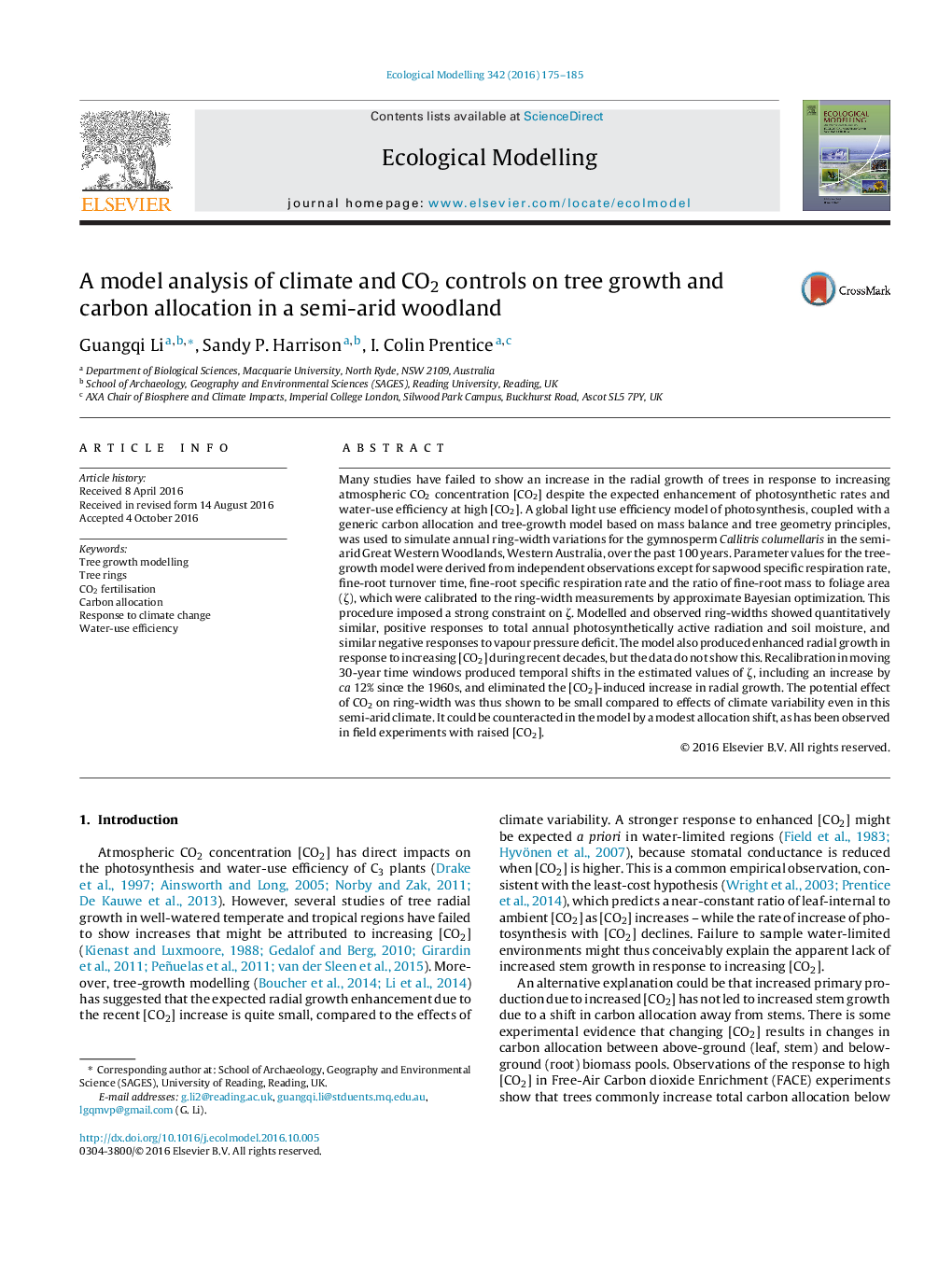| Article ID | Journal | Published Year | Pages | File Type |
|---|---|---|---|---|
| 8846183 | Ecological Modelling | 2016 | 11 Pages |
Abstract
Many studies have failed to show an increase in the radial growth of trees in response to increasing atmospheric CO2 concentration [CO2] despite the expected enhancement of photosynthetic rates and water-use efficiency at high [CO2]. A global light use efficiency model of photosynthesis, coupled with a generic carbon allocation and tree-growth model based on mass balance and tree geometry principles, was used to simulate annual ring-width variations for the gymnosperm Callitris columellaris in the semi-arid Great Western Woodlands, Western Australia, over the past 100 years. Parameter values for the tree-growth model were derived from independent observations except for sapwood specific respiration rate, fine-root turnover time, fine-root specific respiration rate and the ratio of fine-root mass to foliage area (ζ), which were calibrated to the ring-width measurements by approximate Bayesian optimization. This procedure imposed a strong constraint on ζ. Modelled and observed ring-widths showed quantitatively similar, positive responses to total annual photosynthetically active radiation and soil moisture, and similar negative responses to vapour pressure deficit. The model also produced enhanced radial growth in response to increasing [CO2] during recent decades, but the data do not show this. Recalibration in moving 30-year time windows produced temporal shifts in the estimated values of ζ, including an increase by ca 12% since the 1960s, and eliminated the [CO2]-induced increase in radial growth. The potential effect of CO2 on ring-width was thus shown to be small compared to effects of climate variability even in this semi-arid climate. It could be counteracted in the model by a modest allocation shift, as has been observed in field experiments with raised [CO2].
Related Topics
Life Sciences
Agricultural and Biological Sciences
Ecology, Evolution, Behavior and Systematics
Authors
Guangqi Li, Sandy P. Harrison, I. Colin Prentice,
